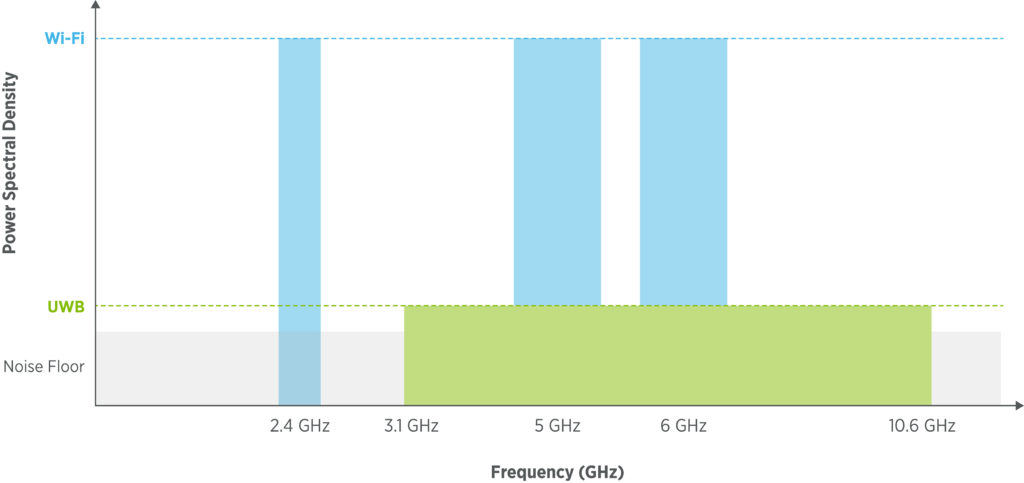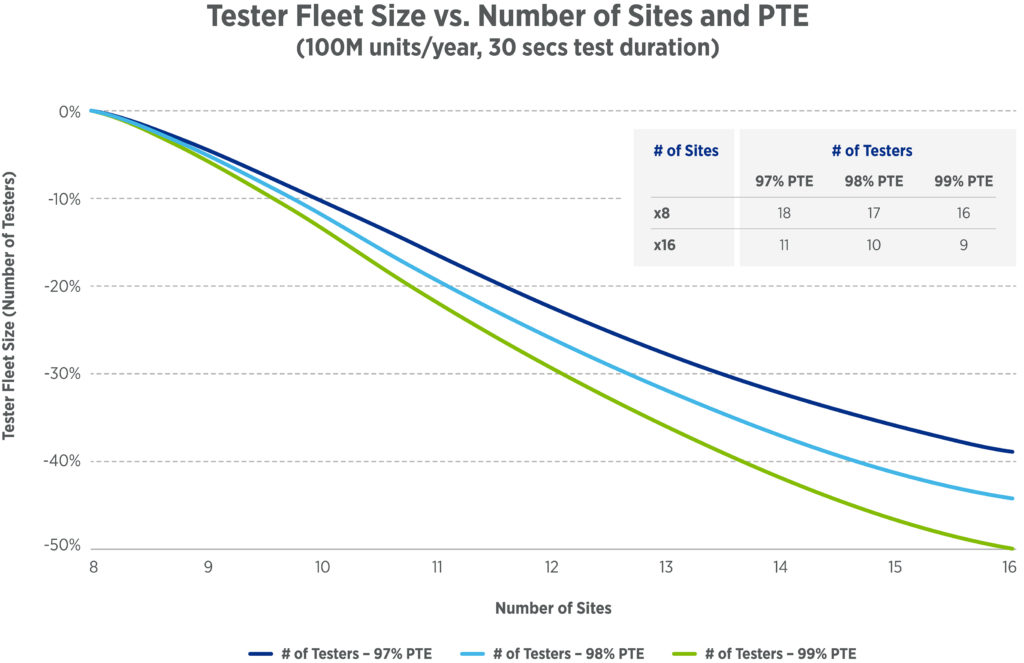These days, we tend to take global wireless connectivity for granted. Whether we’re in a coffee shop, a hotel room or a plane at 35,000 feet, chances are that we’ll be able to enjoy Internet access at reasonable speeds. But despite this constant connectedness, we still manage to misplace our keys and forget where we left our smartphones.
New connectivity technologies are promising to have dramatic impacts on both of these scenarios. Wi-Fi 7, the next iteration of the established Wi-Fi standard, is designed for extremely high throughput. In its final form, Wi-Fi 7 is predicted to meet or even exceed current wired speeds, making it ideal for VR and other high-bandwidth applications.
And even though Ultra Wideband (UWB) doesn’t fall under the Wi-Fi umbrella, you can think of it as a companion wireless technology that will enhance and complement Wi-Fi. Not only will UWB make our keys easier to find (or maybe harder to lose), it could potentially replace our keys altogether!
There will be a lot riding on these next-generation technologies, and they will push consumer and industrial hardware further than it has ever gone before. Given that semiconductors are the underlying technology that enables these applications, it will be critical to test those semiconductor chips during the manufacturing process to ensure quality.
Below we’ll discuss why testing needs to evolve from complex characterization to an effective production-level test, creating a symbiotic relationship between the development of technology and the way that technology is tested for real-world use.
The Basics of Wi-Fi 7
Wi-Fi 7, better known to engineers as IEEE 802.11be, is the next iteration of the global Wi-Fi connectivity standard. Among other things it builds on an enhancement that was first introduced with the current Wi-Fi 6E standard: the 6GHz band. This standard opens up new wireless spectrum on top of the 2.4 and 5 GHz bands that have seen mainstream use since Wi-Fi 4 (802.11n) back in 2008. The additional spectrum can help with network congestion and throughput.
But that’s not all that Wi-Fi 7 brings to the table. There are further technologies like automated frequency coordination (AFC), multi-link operation (MLO) and 4K quadrature amplitude modulation (QAM) that will either be introduced or improved in this evolution.
- AFC goes hand in hand with the 6 GHz band. It will enable Wi-Fi devices to co-exist with other equipment that already makes use of this spectrum, including sensitive Department of Defense and NASA satellite communication systems.
- MLO capitalizes on the fact that Wi-Fi 7’s 5 and 6 GHz bands are close spectral neighbors. Thanks to MLO, mobile phones and IoT devices will be able to simultaneously access multiple wireless channels for greater signal robustness and efficiency.
- 4K QAM increases the amount of data that can be packed into a transmission by sending overlapping signals that differ in terms of amplitude and phase. Previously, Wi-Fi 5 (802.11ac) allowed one of these signals to have 256 states. 4K QAM, by contrast, ramps that number up to 4,096. Wi-Fi 7 will cement this capability as standard.
These technologies naturally require silicon with more powerful transmit, receive and processing functions. Many chips will also feature an ARM processor and more onboard RAM for increased compute capabilities. This means that test processes will need to account for both RF and digital methods to prevent defective chips from reaching consumers, as the cost of capturing defects grows considerably with each stage between manufacturing and deployment.
Despite (or because of) the ultimate ubiquity of Wi-Fi 7 devices, one prerequisite for testing will include power supplies and serial data communication protocols depending on the application. For example, a low-power IoT device in the field will have far different power and connectivity requirements than a high-end smartphone. As a result, there will be more variables, leading to higher test complexity.

The Basics of UWB
UWB is a wireless communication technology that’s designed for short-range applications. Its most common and practical use is location tracking with incredibly low latency and high precision, otherwise known as micro-positioning. It works by sending pulse-based radio waves between devices and by calculating distance and relative location based on timing. You might think of UWB as a kind of low-cost, use-optimized radar.
Although UWB isn’t part of the Wi-Fi standard, it is a global standard in its own right: IEEE 802.15.4z. It’s also easy to see how it might be used in conjunction with current and future Wi-Fi iterations. In a congested area, mobile devices might be able to leverage UWB to determine the optimal connection point with pinpoint accuracy. Likewise, the combination of UWB and Wi-Fi could be used to locate a car in a large parking lot and securely authenticate the approaching driver before unlocking automatically.
Compared to Wi-Fi, UWB has a broader spectrum, draws less power and makes use of a different (non-QAM) modulation waveform. The chip architecture is therefore a little more complex than Wi-Fi. At the same time, there are very similar requirements in terms of its transmit, receive and processing functions, which are also likely to be carried out by a power-efficient but capable ARM processor. UWB silicon will therefore involve a comparable test platform that is optimized for its unique set of use cases and RF characteristics.

Teradyne Solves Wi-Fi 7 and UWB Test Pain Points
There’s no doubt that new technologies like Wi-Fi 7 and UWB drive global innovation—including test paradigms that are up to the complex task of evaluating the technologies themselves. Cutting-edge wireless standards call for an evolution in test strategies that allow for higher frequency, greater bandwidth and (de)modulation capabilities. They also require the expertise to streamline the path from design to production.
Teradyne solves all those challenges. Here’s how:
Design. To start, test engineers can use off-the shelf instruments to characterize new silicon. During this characterization phase, Teradyne’s relationship with industry leaders like LitePoint can assist in the sourcing and supply of quality components to build the test equipment. These components can even be used for high-mix, low-volume production runs using non-automated techniques based on single-site implementation. This doubles as a basis for later high-volume automation.
Production. Production planning of new silicon can usually occur alongside design. However, instead of an inefficient multi-vendor approach, it’s more sensible and cost-effective to identify and co-develop one proven platform with the versatility to test multiple devices. You can then focus on your core business while trusting the outsourcing of production to specialized experts in high-volume manufacturing. That in turn minimizes commercialization risks, maximizes the utility of test instruments and keeps costs in check. And ultimately, it drastically accelerates time to production.
With Teradyne, the entire workflow—and the road to high-volume automation—begins with a single-site design. The proven method for finding defects and outliers lies in the functional test of these devices. That includes the following:
- Transmitter quality: Power, waveform (e.g., pulse), spur (i.e., spurious emissions), phase noise and modulation.
- Receiver sensitivity: Dynamic range, signal-to-noise ratio, channel selectivity, blocking and spur.
- Performance tests: Susceptibility to multipath and Doppler shift, sensitivity.
- Other functionality: Throughput, angle of arrival, time of flight (ToF) and more.
- Calibration and binning: Optimization for real-world application, silicon sorting by build and performance.
While a well-developed single test site is invaluable, it isn’t going to be affordable in production. Lower cost of test is best achieved not by cutting corners in testing but through larger scale. Current models suggest that ×4 to ×8 sites is the sweet spot as long as the process is accompanied by expertise in high-volume production. Regardless of the number of sites or the target wireless application, no test solution is truly production-ready if it doesn’t address the trifecta of performance, quality and cost.

Production-ready High Volume Manufacturing with Teradyne and UltraFLEX
Scaling up from single-site testing to high-volume manufacturing (HVM) comes with technical and economic considerations. Each is dependent on the other, as the transition to multisite can generate impressive long-term economic advantages—provided, of course, that you have a trusted, experienced HVM partner.
When HVM is done right, new technologies can reach the market faster and with higher quality assurance, allowing manufacturers to reinvest both profits and ROI back into their business. That’s as true for Wi-Fi 7 and UWB as it is for 5G and mmWave.
What sets Teradyne apart in this field is our ability to provide an HVM solution that’s fully production-ready. What exactly does this mean? Among other things:
- Teradyne is an established and proven go-to partner in the semiconductor supplier chain.
- We have experience with adoption among leading outsourced semiconductor assembly and test (OSAT) services.
- Our own success depends on mastering the next-generation wireless standards that will simplify semiconductor chip ramps for consumer devices.
- We have the instruments to keep pace with the rapid advances in wireless applications to ensure performance, quality and profitability.
- Our UltraFLEX testers enjoy a large installed base, and we’re developing new solutions to add Wi-Fi 7 and UWB capabilities to satisfy tomorrow’s connectivity demands.
In other words, all the way from design to production, we have all the pieces in place to ramp to HVM for the silicon that powers Wi-Fi 7, UWB and beyond. Our manufacturing automation technology spans the gamut from sockets, load boards, handlers and test instruments to our award-winning IG-XL software. Last but certainly not least, we have a team of specialists who are available to co-develop future solutions and support commercial ramp with scalable test architectures.
Contact us to learn more about Teradyne’s emerging connectivity solutions on our UltraFLEX platform.

David Vondran is the wireless product manager at Teradyne, promoting ATE solutions for high volume manufacturing, including those for mmWave applications. He has held engineering and marketing positions at Rockwell International, Watkins-Johnson, Pacific Monolithics, California Microwave, Anritsu, OML, LitePoint, Advantest, and Astronics Test Systems. David holds a B.S. degree in electrical engineering from California State Polytechnic University, Pomona.